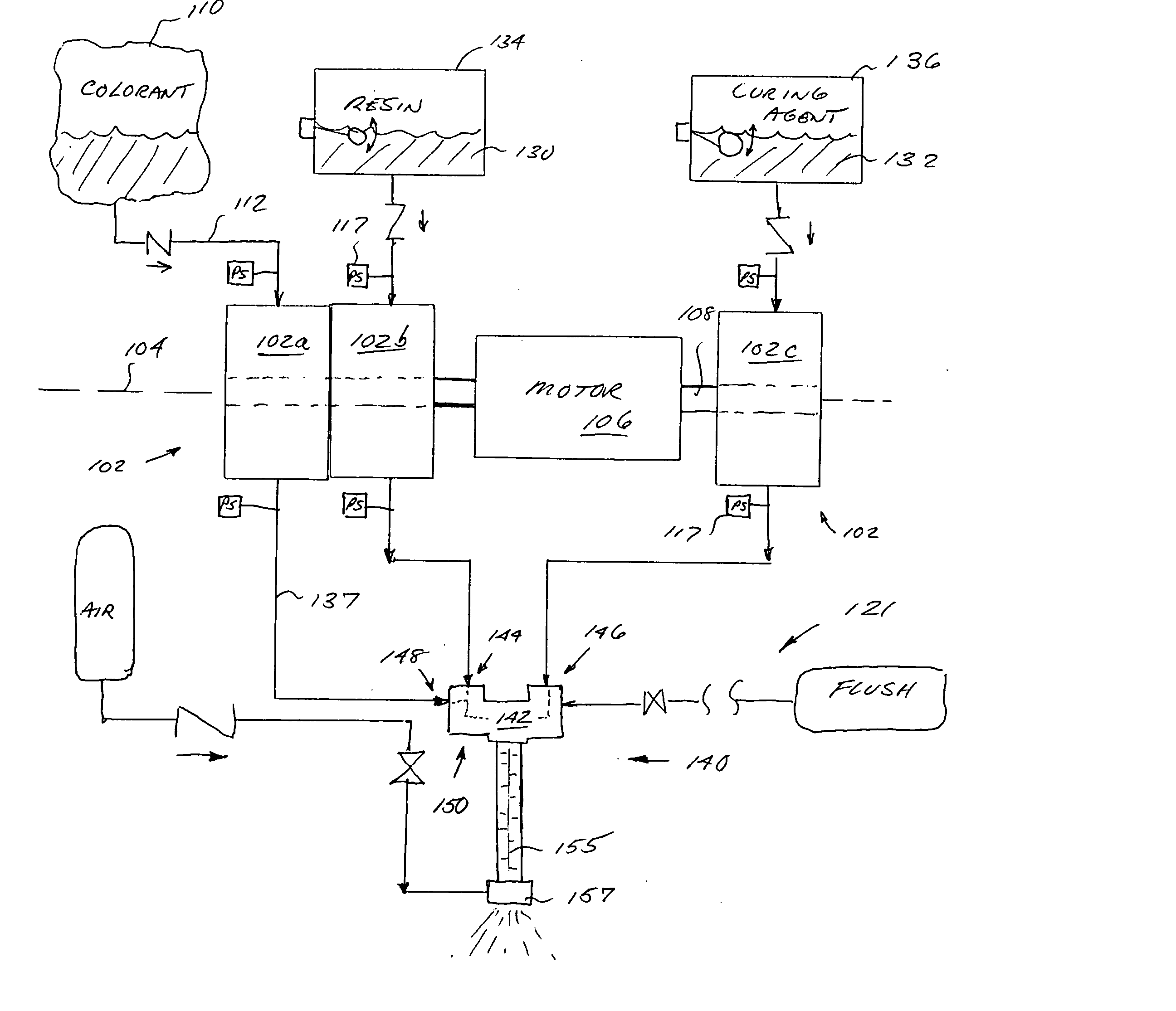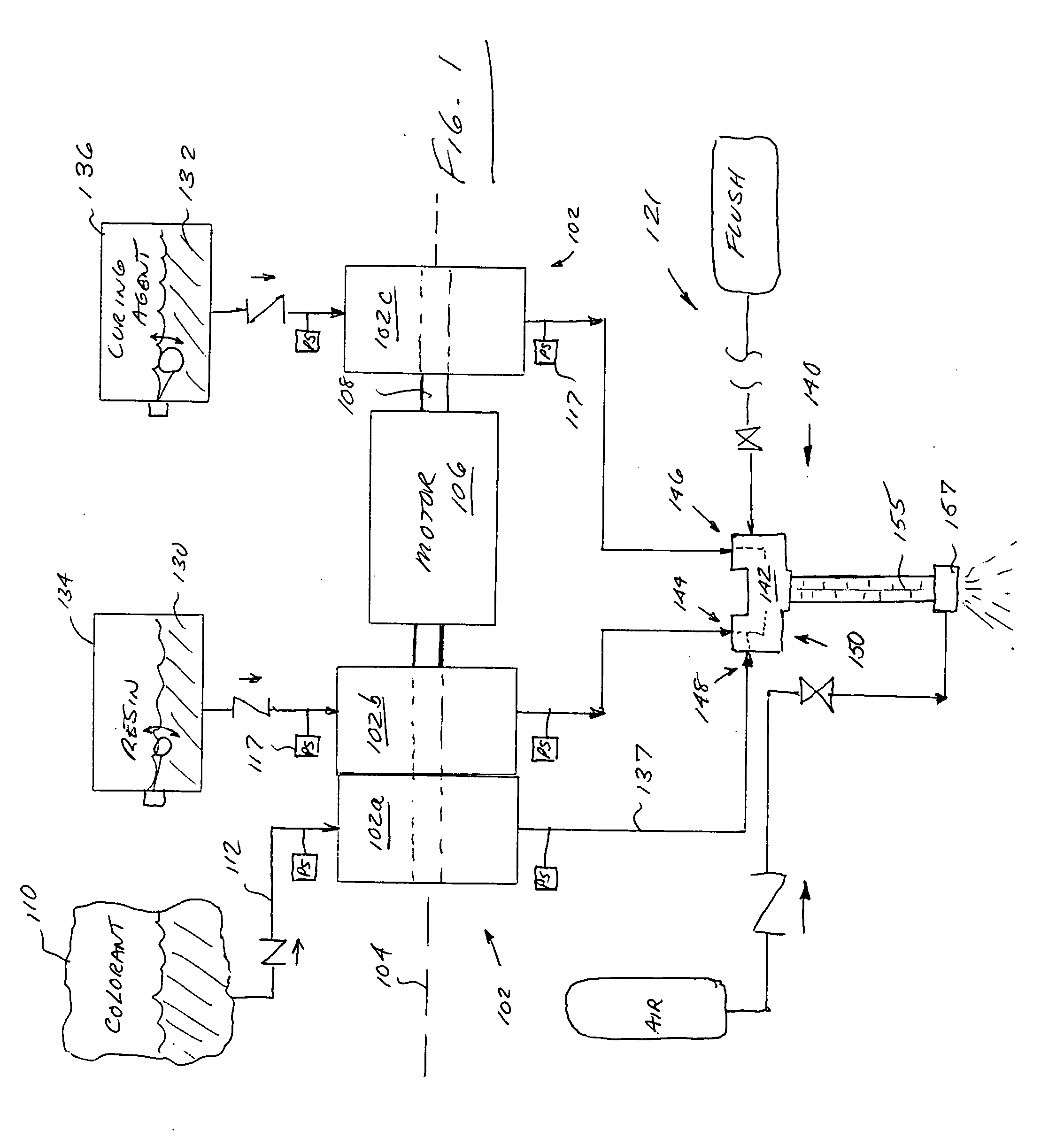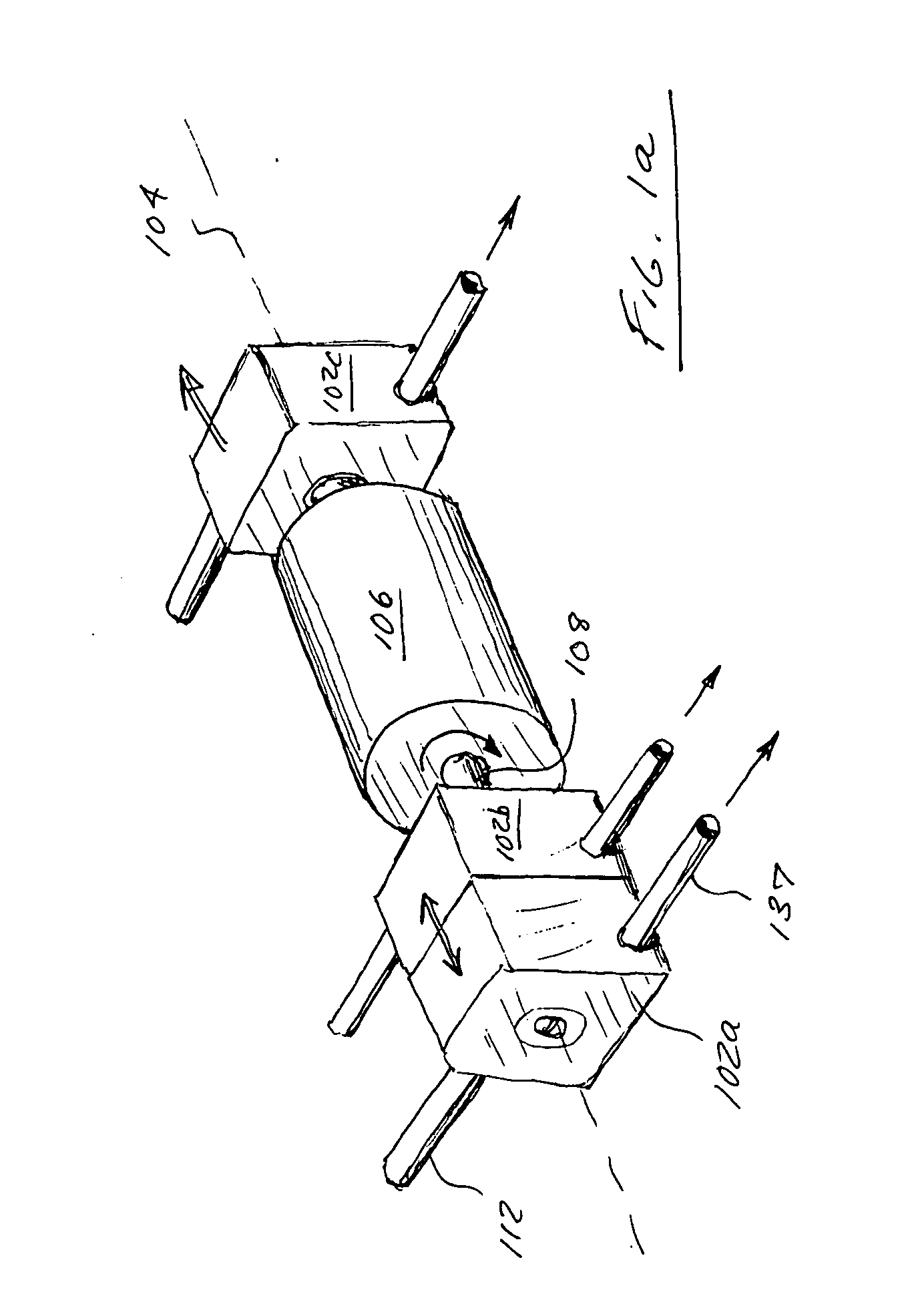As with the invention of Franklin, et al. described above, the apparatus is complex, and includes many chambers and passageways that render it difficult to purge and clean after use or when switching constituent mixing components (e.g., changing colors).
Despite the foregoing broad range of solutions to mixing and metering fluid / viscous components, all generally suffer from several salient deficiencies, including most notably: (i) the need for separate metering controls that are precisely adjusted in order to maintain the desired mixture ratio(s) of the constituents; (ii) use of mixing tanks, lines, etc., which must be thoroughly purged (usually at significant cost and expenditure of time and effort) before a different mixture (e.g., colors) can be used; purging of these prior art systems also requires use of solvents, which are costly, damaging to the environment if not disposed of properly, and potentially toxic to the operator(s) of the
system; (iii) increased size and complexity (relatively speaking), thereby making them difficult to move and manage in confined spaces or situations where only one operator is present; and (iv) use of colorant reservoirs or “paint pots” that must be kept in a specific orientation (e.g., vent side up), and maintained vented to the
atmosphere (the latter which causes some degree of unwanted curing or hardening of the material due to interaction with atmospheric gases and
moisture).
Under existing prior art approaches, excessive waste and costly cleanup procedures characterize the main difficulties in combining and changing the colorant(s) used with
reactive components.
During long periods of time without mixing, the colorant, which tends to be much heavier and more viscous than the
polyol, tends to clog the passageways of the
system, especially on the vacuum side of the system.
Because of this requirement there is often a significant waste that results via this “batch” method.
Also, changing colors is made difficult when using this method since there is a need to empty and clean the storage container and any exposed system passageways prior to each color change.
5000 cps or higher) this task is almost never accomplished thoroughly, creating a real challenge of matching both standard and custom colors since there is almost invariably
contamination of the new color from one (or more) of the colors previously used within that system.
Other prior art methods do not “pre-mix” the colorant and
polyol, but rather maintain the colorant in a “paint pot” or hopper.
The process of filling colorant into a paint pot / hopper none-the-less creates significant cleaning difficulties, and requires an operator to perform numerous steps in order to prepare the system to apply a
colored polyurethane coating.
This system remains largely inefficient because: (i) much of the colorant removed from the lines cannot be reclaimed, (ii) a significant quantity of
solvent is needed to flush and clean the lines, such
solvent presenting both a
health hazard to the operator(s) and an
environmental hazard, and (iii) trained operators are required, and must follow a specific procedure and sequence of steps in order to properly flush the system.
In addition, any
solvent residues that remain in the line(s) after flushing the system can subsequently result in uncontrolled reactions with the multi-component materials in a later application.
These reactions could result in inconsistencies in the color of the colorant being applied, and / or negatively
impact the reaction between the components during application (and even its physical properties after application and curing).
Also, because the colorant added to the reservoir and any reclaimed colorant after use would inherently be exposed to the
atmosphere, the colorant may absorb unwanted
humidity, and react with atmospheric gases (including hardening or “skinning over”), thereby potentially affecting the reaction between the other constituent components or the
efficacy of the colorant itself.
This added complexity is costly (requiring, e.g., multiple independent yet communicative controllers and circuitry), and generally provides for a system susceptible to both significant variations in metering (lack of precision) and failure.
Such techniques also may require frequent adjustment due to changes in the density and / or temperature of the material(s) being metered, variations in
atmospheric pressure, etc.
 Login to View More
Login to View More 


